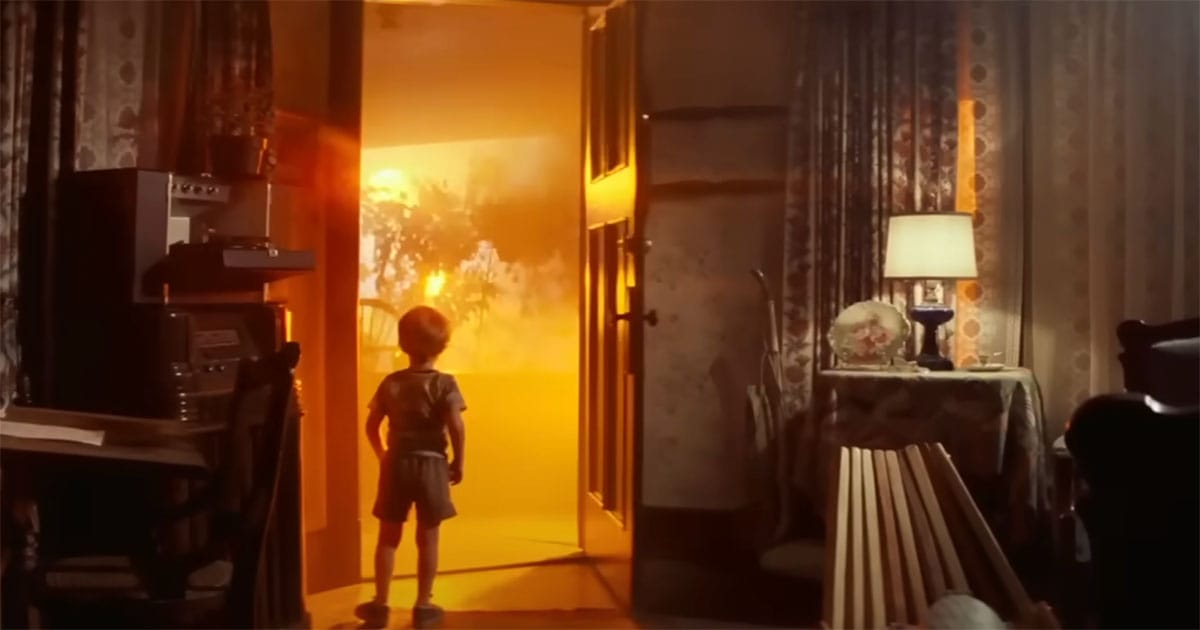How “Close Encounters” Changed First Contact
Discover how “Close Encounters of the Third Kind” transformed alien contact in science fiction, replacing fear with wonder through its unforgettable language of light, sound, and human faith.

This Week in Science Fiction
On November 16, 1977, audiences first saw "Close Encounters of the Third Kind." Released only months after "Star Wars," it offered a different kind of wonder. Instead of space battles, it gave a story about curiosity, faith, and mankind's yearning to know what lies beyond the horizon. It was a science fiction film that treated contact with the unknown as an act of understanding rather than conflict.
The story followed ordinary men and women who shared a mysterious vision. They were drawn to a meeting place, guided not by fear but by a sense of destiny. Spielberg's use of sound, light, and quiet awe turned the idea of a UFO encounter into a spiritual event. The film reminded its viewers that discovery begins with humility, not power.
"Close Encounters of the Third Kind" became both a critical and popular success. It helped science fiction gain new respect as a form that could speak to the human spirit. Forty-eight years later, that week in 1977 still marks a turning point in how stories of alien contact are told—less about invasion, more about belief in a greater order waiting to be revealed.
Sponsored by: Alien Campfire Myth T-shirt

Some legends are too good to stay hidden in the woods. The Alien Campfire Myth T-shirt captures that perfect blend of mystery and nostalgia—two friendly visitors, a glowing fire, and a night sky full of quiet possibility. It’s soft, durable, and built for anyone who still looks up at the stars and wonders who might be looking back.
The Language of Light: How Cinema Speaks to the Unknown
Some stories speak through silence. "Close Encounters of the Third Kind" belongs to that rare group of films that trusted light and sound to do what dialogue could not. It suggested that the deepest truths do not need translation. The film told audiences that faith in communication begins with humility and wonder, not fear. In that way, Spielberg's vision moved science fiction from anxiety toward reverence.

The five musical tones shared between man and visitor were simple, yet they carried the weight of understanding. They were not a weapon, code, or threat. They were a greeting. The glowing shapes and luminous skies that filled the screen became symbols of peace between worlds. At a time when the Cold War still shaped imaginations, "Close Encounters" offered a message that connection was possible even across the greatest divide.

Light as Revelation
Cinematic light has often represented revelation. In "2001: A Space Odyssey," the monolith's stark glow suggested divine attention. In "Close Encounters," that same concept appeared as the mothership's warm brilliance descending from the heavens. Where Kubrick's light felt distant and unknowable, Spielberg's felt near and merciful. Both shared a conviction that enlightenment comes through vision, not explanation.
This use of light gave the audience a sense of participation in discovery. The climactic exchange of color and tone was less about spectacle and more about harmony. It asked the viewer to see light as truth revealed—a reminder that faith often arrives not in thunder but in illumination.
The Sound of Understanding
Sound, too, became a bridge between worlds. The five-tone melody in "Close Encounters" was more than a motif. It was the first step in learning a shared language. Later films built upon this idea. In "Contact," radio signals became the proof of intelligence. In "Arrival," tone and pattern replaced vocabulary. These stories suggest that the first word ever spoken between species might not be a word at all—it might be music.
That approach reflects a belief in patience and order. To listen is an act of faith. To answer carefully is an act of respect. The characters in these films learn that understanding requires surrender, not superiority. The lesson is timeless and reminds us that when man seeks to know the unknown, he must first be willing to listen.

Humanity's Answer
Stories of contact endure because they are, at their core, stories of belief. The human figures in "Close Encounters" were not scientists seeking power or soldiers defending territory. They were ordinary people who felt called to witness something larger than themselves. Their journey was one of trust—leaving behind the known world to meet what they could not comprehend.
This shift in science fiction's focus mirrored a broader change in how audiences viewed technology and faith. The 1970s offered a pause between the atomic fears of the past and the digital optimism to come. In that quiet space, Spielberg suggested that the universe might not be an enemy, but a neighbor waiting to be acknowledged. His film invited viewers to believe that creation itself was reaching out to be known.
The Light That Endures
The power of "Close Encounters" lies in its restraint. It speaks through images, sound, and silence more than through words. That combination continues to influence filmmakers because it trusts the audience's sense of wonder. When the final tones echo across the screen and the ship rises into the sky, it feels less like an ending than a benediction.
The language of light and sound endures because it bypasses argument and reaches straight to the soul. It affirms that mankind's oldest hope is to be recognized by something greater. Science fiction at its finest keeps that hope alive, allowing each viewer to share in a moment of revelation—when belief and discovery become one and the same.

"Close Encounters of the Third Kind" Trivia
- Steven Spielberg wrote the film after years of fascination with UFO reports from the 1950s and 1960s. He wanted to create a story that treated alien visitors as benevolent rather than hostile.
- The five musical notes used for communication were chosen from hundreds of possibilities. Composer John Williams and Spielberg worked together until they found a simple pattern that sounded both human and otherworldly.
- François Truffaut, the celebrated French director, played scientist Claude Lacombe. Spielberg later said he cast Truffaut because his gentle manner embodied the spirit of trust and curiosity that defined the film.

